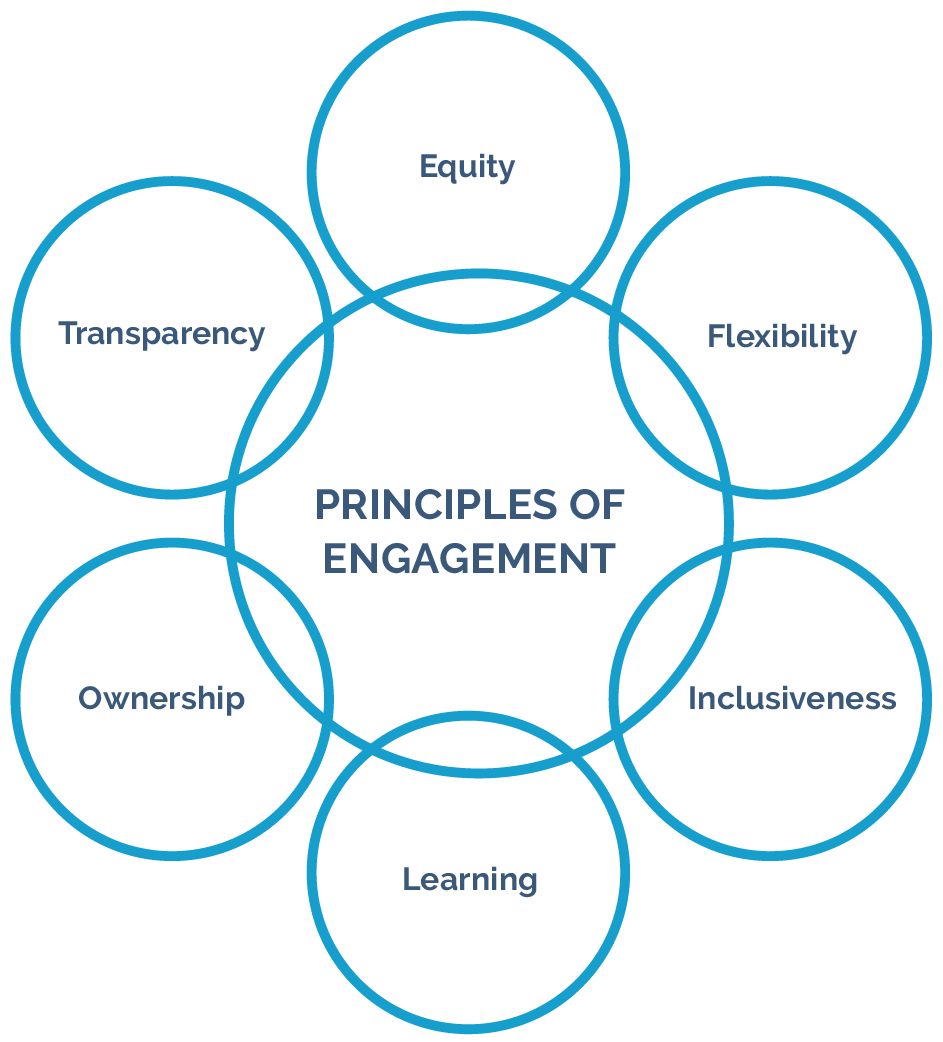The VE ecosystem is complex, with different groups holding diverse interests and stakes in terms of P/CVE programming. Actions taken by one group can have a direct impact on other individuals and groups, and new issues may arise if there is no coordination among the different P/CVE stakeholders. Enhanced cooperation and collaboration among local system actors are necessary throughout all stages of the program cycle. Key stakeholders include any actor that is invested in the issue, and can range from government officials to civil society actors, private sector, and others. For organizations who plan a P/CVE project, support and involvement from local communities where they plan to operate – including community members and local leaders – is essential. In addition, you can further your P/CVE goals by building the capacity and commitment of local actors and governments to counter violent extremism and by holding governments accountable. We focus in this section on stakeholder engagement approaches and mechanisms that your organization can adapt for your P/CVE projects.
A stakeholder is any individual, group, or organization who is part of the local system and is directly or indirectly impacted by the activities or project to be implemented. Stakeholders can influence the results of the activity/project positively or negatively. Examples of stakeholders include: local communities or individuals; national and local government authorities; civil society actors; local, regional, national, and international non-governmental organizations; and indigenous peoples, religious leaders, members of academia, private sector entities, UN agencies, international donors, and special interest groups.
Illustrative stakeholders to consider for a P/CVE project or initiative
| Civil Society | Government | Private Sector |
|---|---|---|
|
|
|
The following basic principles of engagement are basic prerequisites for any successful stakeholder engagement process.
- Equity: Depending on the issue at hand, try to ensure there is a balance of gender, ethnicity, regions, religion, etc. among the stakeholders. The contributions and roles of the stakeholders should be equally valued, and all should have access to the same information and given the same opportunities to voice their concerns and interests.
- Flexibility: Because each stakeholder is accountable to its own constituency, it is important to stay flexible and adapt to each concern or interest – but within the limits established by the project vision, mission, and objectives.
- Inclusiveness: Try to engage all parties affected by an issue and all stakeholders that can impact an issue. Project implementers should pay close attention to stakeholders who do not show interest in engaging with the program but are important to its success. Try to determine if any of the stakeholders need capacity building to be able to engage with the project, and make sure they are provided with proper support.
- Learning: Focusing on learning throughout the process is a critical approach that will ensure credibility as well as project effectiveness. Stakeholders (individually and as a group) should be able to acquire technical and organizational capacities during all phases of the project.
- Ownership: For stakeholders to be fully engaged in a project, they need to be included in every step of the project development process. Co-creation allows stakeholders to share ownership and reinforces their commitment.
- Transparency: Try to keep all stakeholders informed on every aspect of the project, including knowledge sharing, networking activities, reporting, etc. It is also extremely important to communicate and share all information more widely with the general public.

